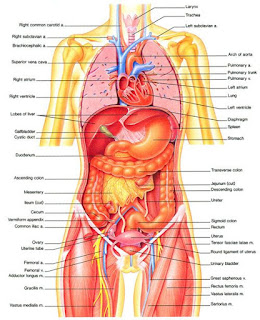Week 7: Neuroscience+ Art
Neuroscience
is of course the study of the brain, but many of us often forget about the
beauty and the art behind the study of our conscience and how our brain
functions. Our brain is the core of our existence, and it's what makes each one
of us the beautiful creatures that we are. Everyone’s DNA is different. Color, tone,
size, symmetry, fingerprints etc. The brain is similar in
this regard. Biologically the human brain is very similar in every
person; however, the way they are expressed is extremely different. Some people
are left side dominate, while others are right. Some are good at math, while some
are better at literature. Some are athletic, some are musical. These all
stem from the brain and personality of each individual. The origin of personality is a combination of the both nature
and nurture. Now,
artists like Karen Norberg and Margerie Taylor are using their fixation on the
human brain to create art from its physical beauty and wonder. These artists
actually used real MRI images, dissections, and publications as research to
create these scientifc works of art.
(Future - Neuroscience)
Ramachandran is the Director of the Center for Brain
and Cognition, and Distinguished Professor with the Psychology Department and
Neurosciences Program at the University of California, San Diego (UCSD). He has been studying the
relationship between art and neuroscience for years. Specifically, he has noted
the universal human appreciation for art, and he believe he can explain the
human appreciation for abstract art. However, he comes to the conclusion that
we don't really know. He has been learning about the brain by analyzing
its dysfunction, is very optimistic about his research, but he cannot make any
definitive claims about how our brains perceive art.
(Ramachandran, Vilayanur)
As
discussed in the lecture video, Pierre Paul Broca, a French medical doctor and
anthropologist, who used post-mortem analysis to determine the specific part of
the brain that is associated with language and speaking. Broca was so revered
by the science world that that part of the brain is now known as Broca's
convolution. Broca was also significant considering his contributions to
the standardization of scientific measurement. Over his years he invented
27 various instruments that take measurements of the body. Broca
understood the art of the brain and he dedicated his entire life to trying to
understand the human mind.
Work Cited
“Future - Neuroscience.” BBC News, BBC,
www.bbc.com/future/tags/neuroscience.
Norberg,
Karen. "The Museum of Scientifically Accurate Fabric Brain Art." The
Museum of Scientifically Accurate Fabric Brain Art. Boston Museum of Science, 2
Mar. 2013. Web. 20 May 2018. <http://neuroscienceart.com/>.
Meiser,
Morgan. "This Is Your Brain on Art." The
Smart Set. Drexel University, 17 Mar. 2011. Web. 20 May 2018.
<http://thesmartset.com/article03161101/>.
“Paul
Broca.” Wikipedia, Wikimedia Foundation, 19 May 2018,
en.wikipedia.org/wiki/Paul_Broca#/media/File:Paul_Broca.jpg.
"Pierre
Paul Broca." Human, Speech, Language, and Brain. N.p.,
n.d. 20 May 2018.
<http://psychology.jrank.org/pages/97/Pierre-Paul-Broca.html>.
"Ramachandran,
Vilayanur." “Vilayanur Ramachandran.” TED: Ideas Worth Spreading,
www.ted.com/speakers/vilayanur_ramachandran.
"Traits of
Human Consciousness." Traits of Human Consciousness. N.p., n.d. Web. 20
May 2018. <http://www.gurusoftware.com/GuruNet/Personal/Factors.htm>.
Vesna, Victoria. “Conscious / Memory
(Part 1).” Lecture. 20 May 2018. http://www.youtube.com/watch?feature=player_embedded&v=DLVQIwOn7o8
Vesna, Victoria. Lecture. “Conscious
/ Memory (Part 2).” 20 May 2018. http://www.youtube.com/watch?feature=player_embedded&v=Xlg5wXHWZNI
Vesna,
Victoria. Lecture. “Conscious / Memory (Part 3).” 20 May 2018. https://www.youtube.com/watch?v=E5EX75xoBJ0





댓글
댓글 쓰기